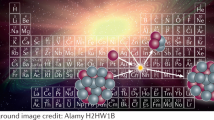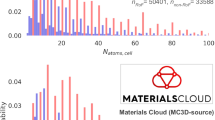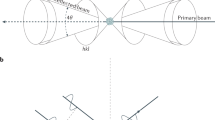Abstract
THE original mass-spectrograph was set up in the Cavendish Laboratory in 1919. Its resolving power was suffint to separate mass lines differing by about 1 in 130, and its accuracy of measurement was about 1 in 1000. These capabilities sufficed to determine with fair certainty the isotopic constitution of more than fifty elements, and to demonstrate that, with the exception of hydrogen, the masses of all atoms could be expressed as integers on the scale 0=16 to one or two parts in one thousand. For advance in two directions of fundamental importance, namely, the resolution of the mass lines of the heavier elements and the measurement of the divergences from the whole number rule, a considerably more powerful instrument was required and has now been constructed. The increase in resolution is obtained by doubling the angles of electric and magnetic deflexion, and sharpening the lines by the use of finer slits placed farther apart. The new instrument has five times the resolving power of the old one, far more than sufficient to separate the mass lines of the heaviest element known. Its accuracy is 1 in 10,000, which is just enough to give rough first order values of the divergences from whole numbers.
This is a preview of subscription content, access via your institution
Access options
Subscribe to this journal
Receive 51 print issues and online access
$199.00 per year
only $3.90 per issue
Buy this article
- Purchase on Springer Link
- Instant access to full article PDF
Prices may be subject to local taxes which are calculated during checkout
Similar content being viewed by others
References
From the Bakerian Lecture—A New Mass-Spectrograph and the Whole Number Rule, Proc. Roy. Sec., A, vol. 115, p. 487, 1927, to which the reader is referred for all details of apparatus and technique.
F. W. Aston, P1il. Mag., vol. 49, p. 1199 (1925).
See "Isotopes," 2nd edition, p. 131.
Guthrie Lecture of the Physical Society of London, 1927.
Rights and permissions
About this article
Cite this article
ASTON, F. Atoms and their Packing Fractions1. Nature 120, 956–959 (1927). https://doi.org/10.1038/120956a0
Issue Date:
DOI: https://doi.org/10.1038/120956a0
Comments
By submitting a comment you agree to abide by our Terms and Community Guidelines. If you find something abusive or that does not comply with our terms or guidelines please flag it as inappropriate.



